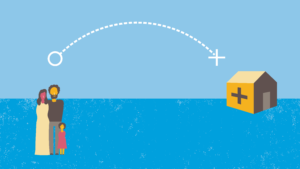Archive: Family Planning and HIV Services Integration Toolkit
Archive:
Family Planning and HIV Services Integration Toolkit
You have reached this page either from the main Toolkits Archive page or because you followed a link to a page or resource that used to be in a K4Health Toolkit. The Toolkits platform has been retired.
 The integration of family planning (FP) and HIV services is an approach in which both services are provided together to deliver more comprehensive care to clients and improve sexual and reproductive health outcomes. It includes the delivery of both services at the same time and location as well as referrals from one service to the other. “Integration” in this context refers to the delivery of health services, and is one part of a broader net of linkages between FP and HIV policies, programs, funding, and advocacy.
The integration of family planning (FP) and HIV services is an approach in which both services are provided together to deliver more comprehensive care to clients and improve sexual and reproductive health outcomes. It includes the delivery of both services at the same time and location as well as referrals from one service to the other. “Integration” in this context refers to the delivery of health services, and is one part of a broader net of linkages between FP and HIV policies, programs, funding, and advocacy.
Toolkit Alternatives
- Explore FP2030’s HIV Integration resources
- Visit Knowledge SUCCESS content related to FP/HIV integration
- Read articles on service integration published by Global Health: Science and Practice
- Contraceptives for [family planning] Clients with STIs, Including HIV (a portion of Chapter 22 of Family Planning: A Global Handbook for Providers
- Search FP insight for many FP/HIV integration resources, including this FP and HIV Integration collection
- View/download the Family Planning Training Resource Package’s module on Family Planning for Clients with HIV
- Visit past captures of the Family Planning/HIV Services Integration Toolkit on the Internet Archive’s Wayback Machine
If you urgently require a specific resource from a retired Toolkit, contact toolkits-archive@knowledgesuccess.org.





